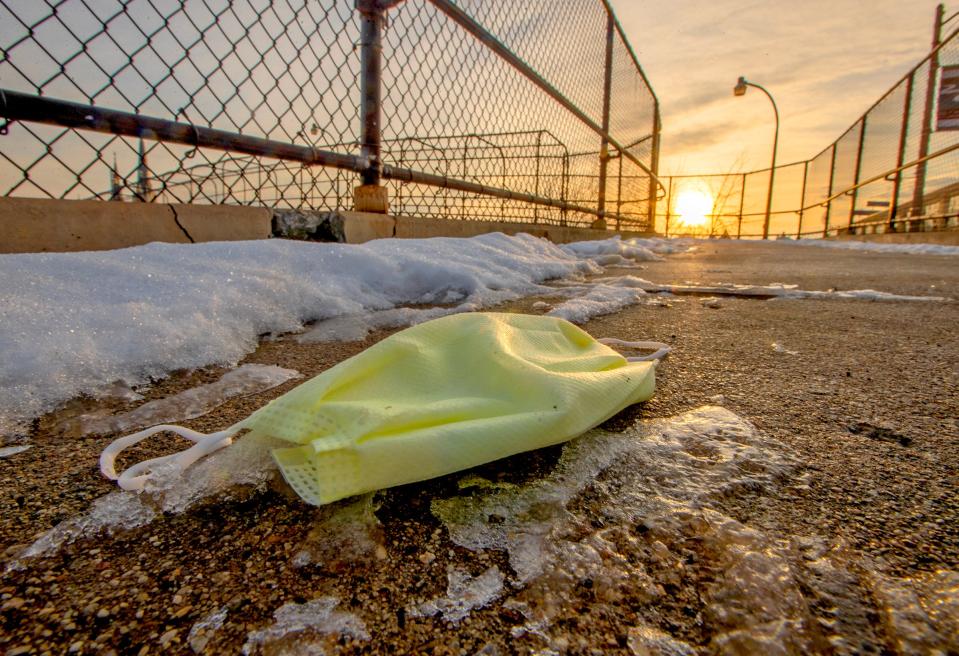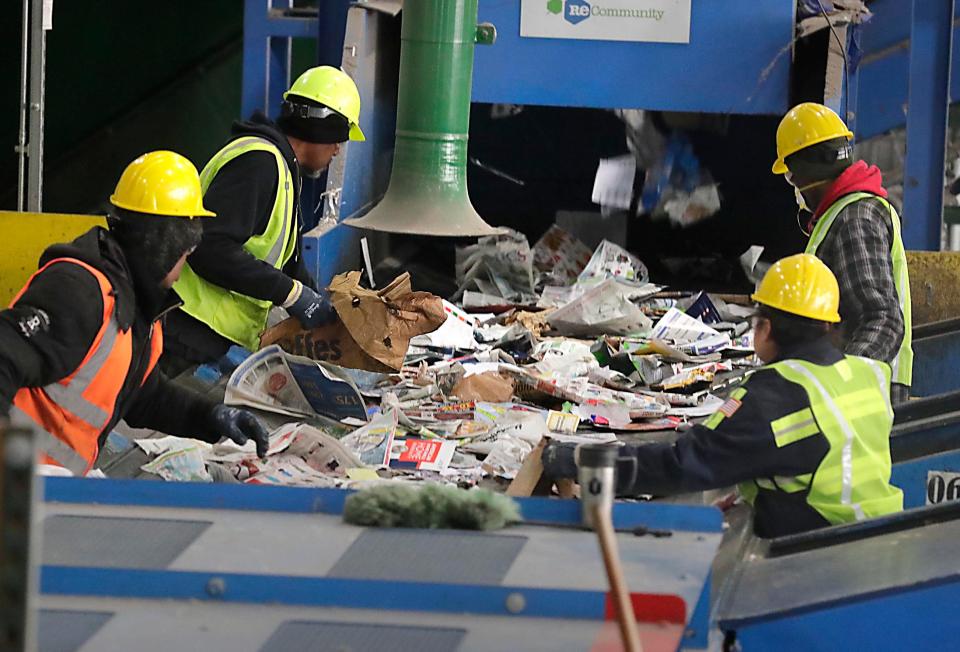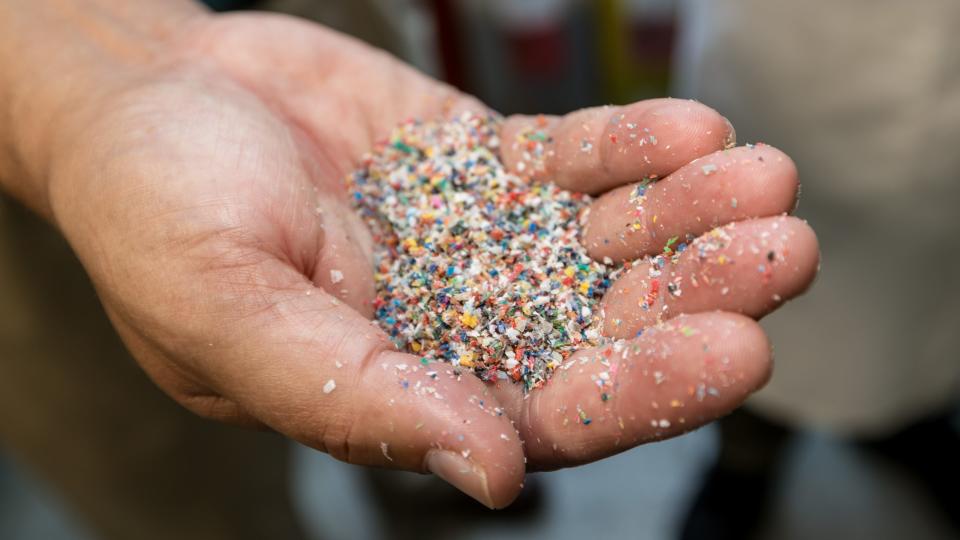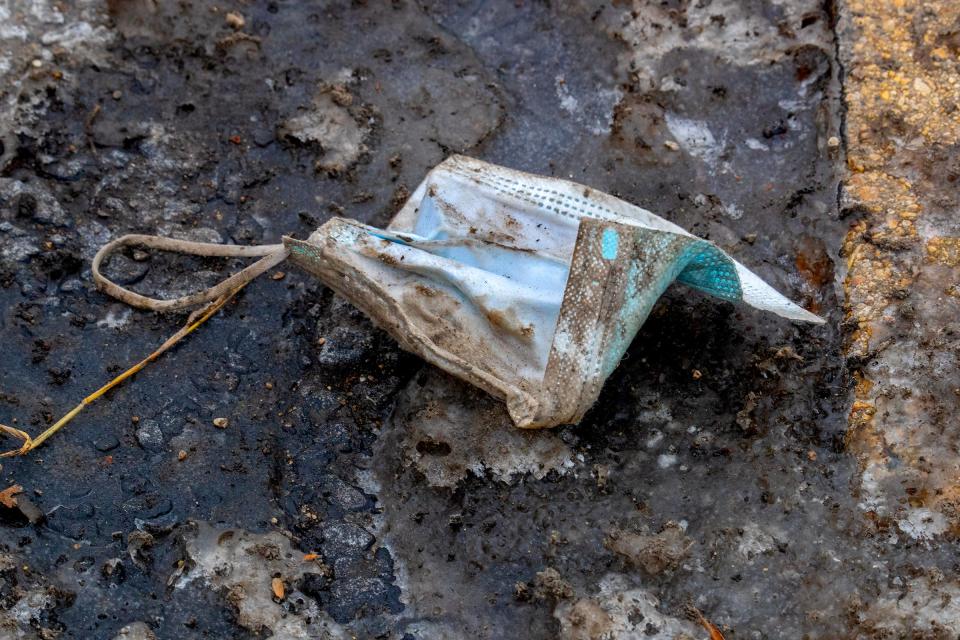COVID rates are rising. Now, a UW-Madison scientist has found a way to recycle face masks.
It may be time to break out the face masks again.
COVID-19 cases are on the rise nationwide due to a new omicron subvariant, EG.5, nicknamed “Eris.” Though Wisconsin isn't getting hit hard yet, hospitalizations are up 14.3% and deaths are up 10% in the last week, according to the U.S. Centers for Disease Control.
While masks are considered crucial for preventing the spread of disease, they’ve generated millions of tons of waste.

At the height of the pandemic, 3.4 billion single-use face masks were discarded daily, filling landfills, littering the streets and polluting aquatic ecosystems. Although we think of them as being made of fabric or paper, they're actually composed of a mix of different plastics that take anywhere from 20-500 years to decompose.
Those plastics can be recycled, just not in curbside neighborhood bins.
Here’s what to know about plastic mask recycling.
Why is plastic hard to recycle?

In municipal recycling centers, plastic is mechanically recycled, meaning it is cleaned, sorted, shredded, melted down and shaped into pellets to be reused.
Any “recyclable” plastic product is labeled with a number between one and seven that indicates the type of plastic used:
Polyethylene terephthalate: Single-use beverage bottles.
High-density polyethylene: Milk jugs, detergent containers, shampoo bottles.
Polyvinyl chloride (PVC): Plastic food wrapping, PVC pipes.
Low-density polyethylene: Plastic bags, shrink wrap.
Polypropylene: Yogurt tubs, medicine bottles.
Polystyrene: Carryout containers, packing peanuts, meat trays, Styrofoam plates and cups.
Miscellaneous: Nylon, sunglasses, DVDs, plastic cutlery, toothbrush.
Check with local municipal centers about what plastics can be recycled. Curbside recycling in Milwaukee accepts plastic labeled one, two, or five.
Items such as potato chip bags, granola bar wrappers and face masks, are multilayered, meaning they have a combination of different plastics that, together, produce a stronger, more impermeable material. These are more difficult to recycle because the layers can't be manually separated.
What are face masks made of?
Single-use surgical and KN95 face masks are mostly made of polypropylene — an inexpensive, breathable, water-resistant type of plastic. But they can also contain other plastic polymers, such as polyethylene terephthalate, nylon, and polyurethane.
Can I recycle my face mask in a curbside bin?
No.
Can face masks be recycled in Wisconsin at all?
Yes.

Researchers at the University of Wisconsin-Madison and the Chemical Upcycling of Waste Plastics, or CUWP, have found a way to chemically separate and purify the different layers of plastic. The technology, called STRAP (solvent-targeted recovery and precipitation), isolates polypropylene from single-use face masks by shredding them and repeatedly washing them with chemical solvents.
According to George Huber, the executive director of CUWP and a professor at UW-Madison, STRAP produces “very clean polypropylene” with similar thermal and chemical properties to virgin plastic derived from natural gas or crude oil.
“We have models that show the cost of STRAP technology can be lower than virgin plastic,” said Huber.
In addition, STRAP releases 60-70% fewer greenhouse gas emissions.
Has STRAP been commercialized?
Not yet.
For now, the research team is still processing materials in a laboratory and isolates only 0.25 pounds of purified plastic per week.
Researchers are building a pilot facility in collaboration with Michigan Technological University to demonstrate that STRAP can be upscaled. The facility is expected to be operational next year and will produce about 55 pounds of purified recycled plastic per hour.
Huber estimates that by 2027, STRAP will have an even larger commercial plant.
“We’ve identified a location in Green Bay, Wisconsin, at a company called Convergen Energy,” said Huber. “But we need to get the next stage working with Michigan Tech first.”
More: This Green Bay business wants to help commercialize an innovative way to recycle plastic
So, what should I do with my mask in the meantime?
Until STRAP is up and running, Huber said, customers who want to be environmentally conscious can go online and purchase a Zero Waste Box from TerraCycle to collect disposable plastic face masks. TerraCycle specializes in recycling materials that are not typically accepted in curbside programs. Once full, the box is sent back to TerraCycle and repurposed into plastic pellets, lumber, outdoor furniture, watering cans, and other products.

This article originally appeared on Milwaukee Journal Sentinel: Wisconsin scientist has new way to recycle plastic in COVID face masks

